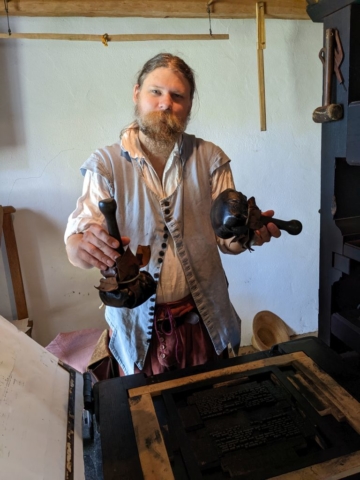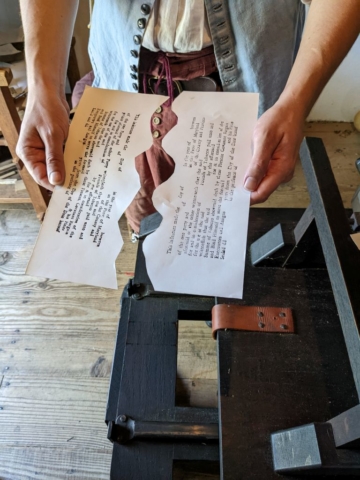We took a 3 day getaway Monday – Wednesday on Solomon’s Island in Southern Maryland. It was a huge success. We stayed at an upscale B&B. We originally planned to go last week, but that was during the tail end of a nor’easter. The weather was cold and wet and raw. Fortunately, the B&B owner let us delay our visit a week. That’s just one example of how generous and friendly the owners are. We enjoyed warm, sunny days for the entire three days. We expected the breakfasts would be good. They were much better than we expected. We got a 3-course breakfast, and the food was exquisite.
On the way down Monday we stopped to see a Bald Cyprus swamp, a sculpture garden, and the Calvert Marine museum. All three were very nice. The winning attraction was St. Mary’s City. We went there Tuesday morning, expecting to stay a few hours. We ended up staying all day. The third day was OK, but not quite as good as the first two. We visited the Patuxent Air Museum, Calvert Cliffs State Park, and an Indian village at Jefferson Patterson Park. I’ll put a few more details and some pics in the website for those who are interested. We had heavy traffic on the drive home, but overall the getaway was a great hit and a lot of fun.
I didn’t take any pictures of the swamp. I don’t know how to do that. We saw a small sign that said to ask about the audio tour, so we did. The device was underwhelming. It had a tiny sound player with a Bluetooth speaker that wouldn’t pair. We had to hold the player near our ears. The presentation was almost monotone. It didn’t stop or pause when it got to the end of a site. Some of the site numbers were missing. But the information was fantastic. We really enjoyed listening. There are some things scientists don’t know about Bald Cyprus trees. The presenter did a good job of presenting popular theories and making it clear what we are sure of and what we aren’t. Bald Cyprus are deciduous conifers. I didn’t realize the combination exists. To protect themselves from freezing temperatures, they release their leaves and let the water in the tree flow back into the ground. Apparently the water level in the swamp goes up 6″ in the fall.
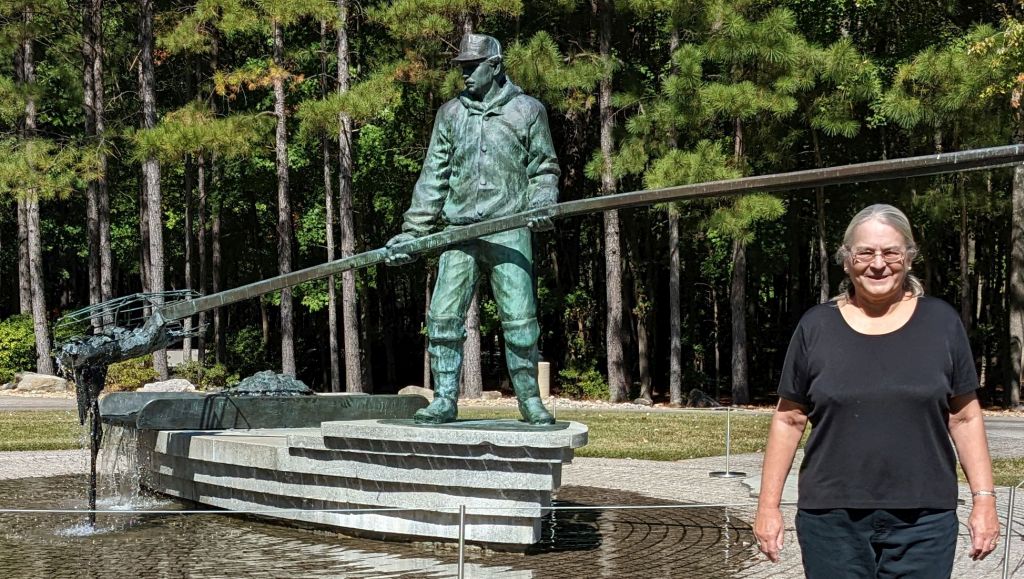
The Annemarie Sculpture Garden mostly has artwork I don’t understand. But the work at the entryway is something everybody can understand. If we didn’t understand the art, we certainly enjoyed the beautiful grounds and pleasant weather.
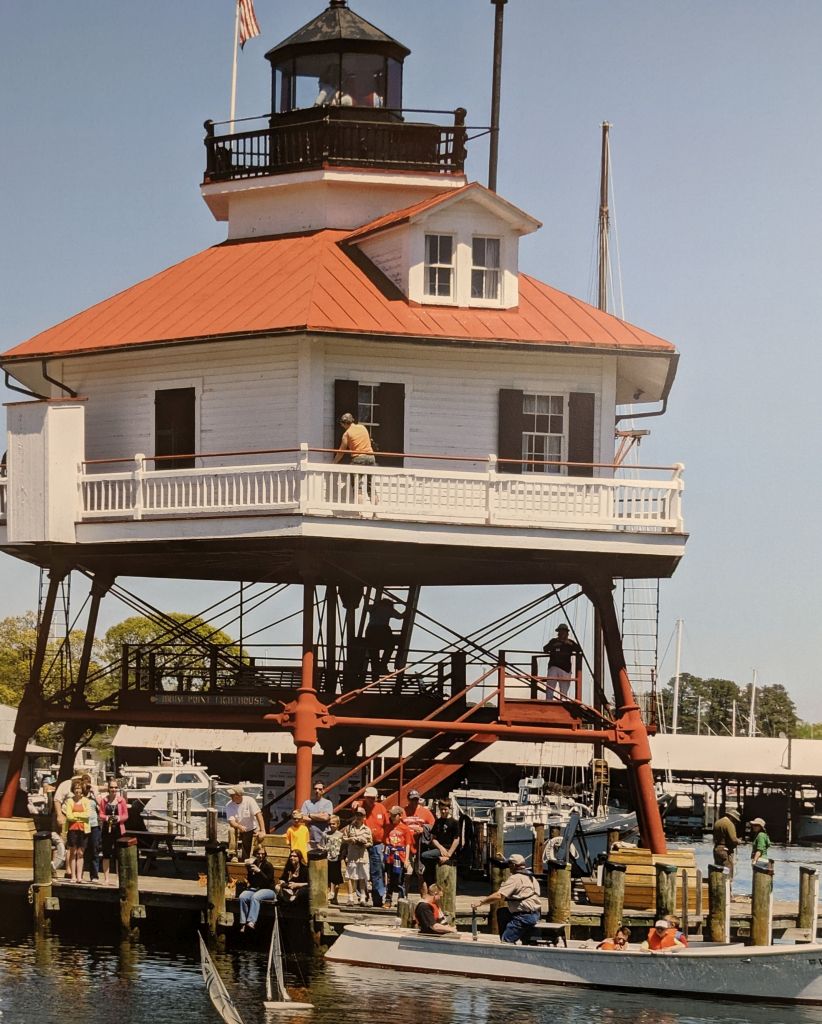
The Calvert Marine Museum was much larger than we expected. Neither of us was excited by the outboard motor display, but the rest of the museum was interesting. We went up into this lighthouse. The space is incredibly cramped. I couldn’t believe that lighthouse keepers lived in the lighthouse with their families. I would be going bonkers in just a few hours.
We arrived at St. Mary’s City Tuesday morning just as they opened. We were the only people at the printing shop, and we got all kinds of questions answered. Here you see us making an indentured contract. The wavy cut line is to prove that the contract presented by the indentured servant is actually the same as the contract held by the bond issuer.
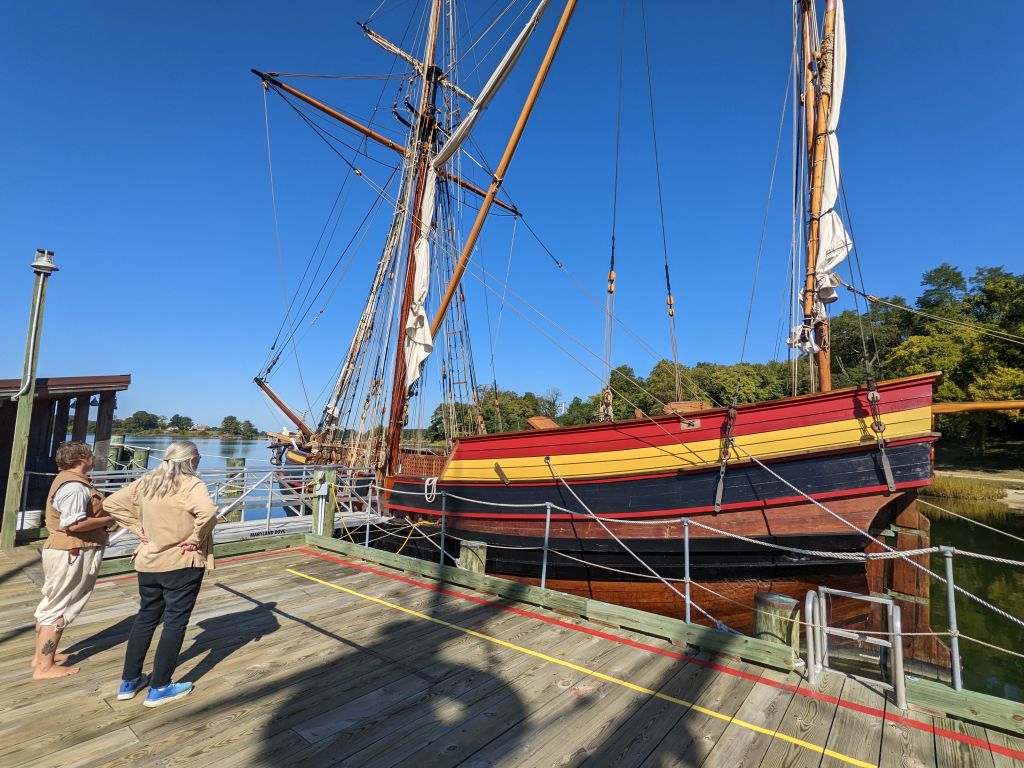
Here’s the mandatory picture of the Dove. They actually have two reproductions of the ship. This is the newer reproduction. It’s a lot closer to the original ship. Note the sailor talking with Danita is barefoot, as are all good sailors of the era.
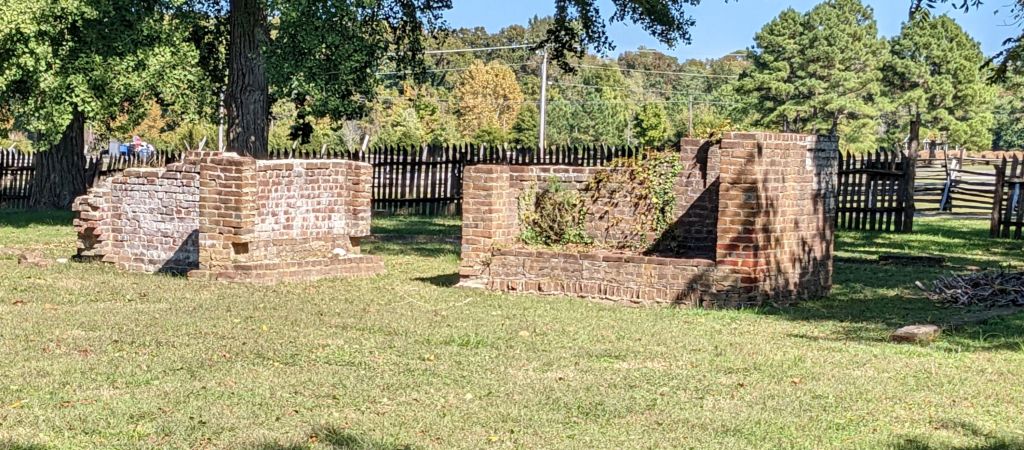
Of all the things we saw and did, this is one of the most interesting. These bricks look like ruins from the 17th century, but actually they are recent. There was a time when museums would build fake ruins to show what they might have looked like and to create interest, which of course helps sell admission tickets. The problem is, they didn’t say the ruins were fake. Today, the folks in St. Mary’s are much more careful to stay truthful. St. Mary’s is an important archeological site because it is largely untouched. The city was founded early in the 17th century and abandoned early in the 18th, when the capitol of Maryland was moved to Annapolis. Between then and now, the area was used as as tobacco farm. The end result is that this is a pristine archeological site for both the colonials and the Indians. Unfortunately, the Indian village at St. Mary’s was a little below the mark, the only weak exhibit in this otherwise excellent facility.
The air museum Wednesday turned out to be a kind of a dud. Pax River is a testing site, and it’s really hard to make testing interesting. They had some interesting aircraft, but their entire slant was on the testing. Docents were there to ramble on about what they did back in the day. It was OK, but unexciting.
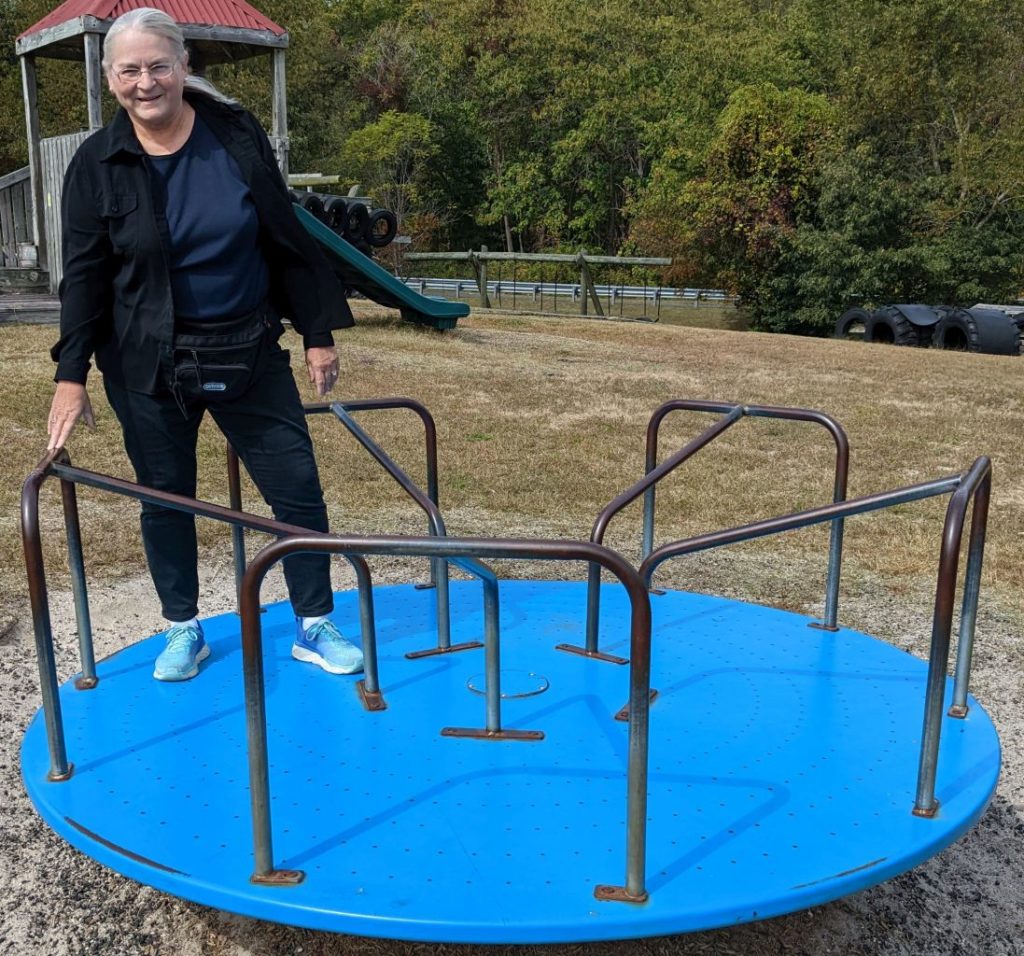
Our next stop was Calvert Cliffs state park. Calvert cliffs is an important geographical archeological site with may artifacts and an easily studied view of the Earth’s ancient history. We expected to see numerus artifacts and examples. But there was no museum. Even worse, they did not permit visitors to walk to the cliffs. In my mind, that pretty much is what the Calvert Cliffs park should be about. The sole redeeming virtues were the nice picnic tables for lunch, and something I haven’t seen in years, and did not expect to ever see again. The merry go round works perfectly.

Our last stop was a reproduced Indian village at Jefferson Patterson Park. This museum has spent a ton of money on their museum and site. This picture is lifted from their web site. They didn’t have anybody around who knew much about the village, but from the placards and what I saw, it is an excellent reproduction. It is certainly better than the Indian Village at St. Mary’s City.

